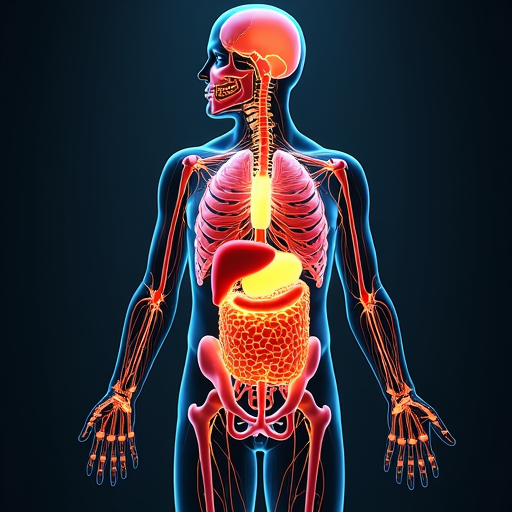The art of non-verbal hypnosis is a captivating realm that unlocks the secrets of the human body. In this third installment, we delve into the intricacies of the internal organs and the nervous system – the hidden orchestrators of our physical and mental wellbeing. But understand this: the names and functions of these systems are not the focus. Instead, we’ll explore a more powerful approach.
Visualizing the human anatomy can be a game-changer. By immersing ourselves in the visual representations of the liver, kidneys, and intricate neural pathways, we can create a lasting imprint in our minds. This isn’t about rote memorization – it’s about cultivating a visceral understanding that can elevate your non-verbal hypnosis practice to new heights. Imagine the power of being able to “feel” the size and placement of the organs, or to sense the delicate web of nerves that span the entirety of the body. This is the true essence of embodied knowledge.
So, let’s put aside the textbook details and open our eyes to the visual wonders of the human form. Because when you can truly see and feel the inner workings of the body, you’ll unlock a new level of connection, empathy, and transformative potential in your non-verbal hypnosis sessions.
Useful Links:
https://www.hypnoticcafe.com/
The art of non-verbal hypnosis is a captivating realm that unlocks the secrets of the human body. In this third installment, we delve into the intricacies of the internal organs and the nervous system – the hidden orchestrators of our physical and mental wellbeing. But understand this: the names and functions of these systems are not the focus. Instead, we’ll explore a more powerful approach.
Visualizing the human anatomy can be a game-changer. By immersing ourselves in the visual representations of the liver, kidneys, and intricate neural pathways, we can create a lasting imprint in our minds. This isn’t about rote memorization – it’s about cultivating a visceral understanding that can elevate your non-verbal hypnosis practice to new heights. Imagine the power of being able to “feel” the size and placement of the organs, or to sense the delicate web of nerves that span the entirety of the body. This is the true essence of embodied knowledge.
So, let’s put aside the textbook details and open our eyes to the visual wonders of the human form. Because when you can truly see and feel the inner workings of the body, you’ll unlock a new level of connection, empathy, and transformative potential in your non-verbal hypnosis sessions.

Final Reflections: Transforming Non-Verbal Hypnosis Practice
As we conclude our exploration of human anatomy through the lens of non-verbal hypnosis, it becomes abundantly clear that true mastery transcends mere intellectual understanding. The journey we’ve embarked upon is not about memorizing complex medical terminology, but about developing a profound, visceral connection with the human body’s intricate systems.
The power of visualization cannot be overstated. When practitioners move beyond traditional learning methods and embrace a more holistic, sensory-driven approach, they unlock extraordinary potential. By immersing ourselves in anatomical imagery – feeling the expansive presence of organs, tracing the delicate neural networks, and truly experiencing the body’s inner landscape – we transform our practice from a mechanical technique to an art form of deep empathy and understanding.
This approach challenges conventional hypnosis training. Instead of treating the body as a collection of disconnected parts, we learn to perceive it as an interconnected, living system. The liver isn’t just an organ; it’s a dynamic entity with its own energetic presence. Nerves aren’t simply biological conduits; they’re intricate communication pathways that carry profound wisdom.
For practitioners seeking to elevate their non-verbal hypnosis skills, the path forward is clear: cultivate a sense of wonder, embrace visual learning, and develop an intuitive, embodied understanding of human anatomy. This isn’t just a technique – it’s a transformative philosophy that bridges scientific knowledge with intuitive healing.
By integrating visual learning, sensory awareness, and a deep respect for the body’s complexity, non-verbal hypnosis practitioners can create truly remarkable healing experiences. The human body becomes not just a subject of study, but a living, breathing canvas of potential and transformation.



Comments